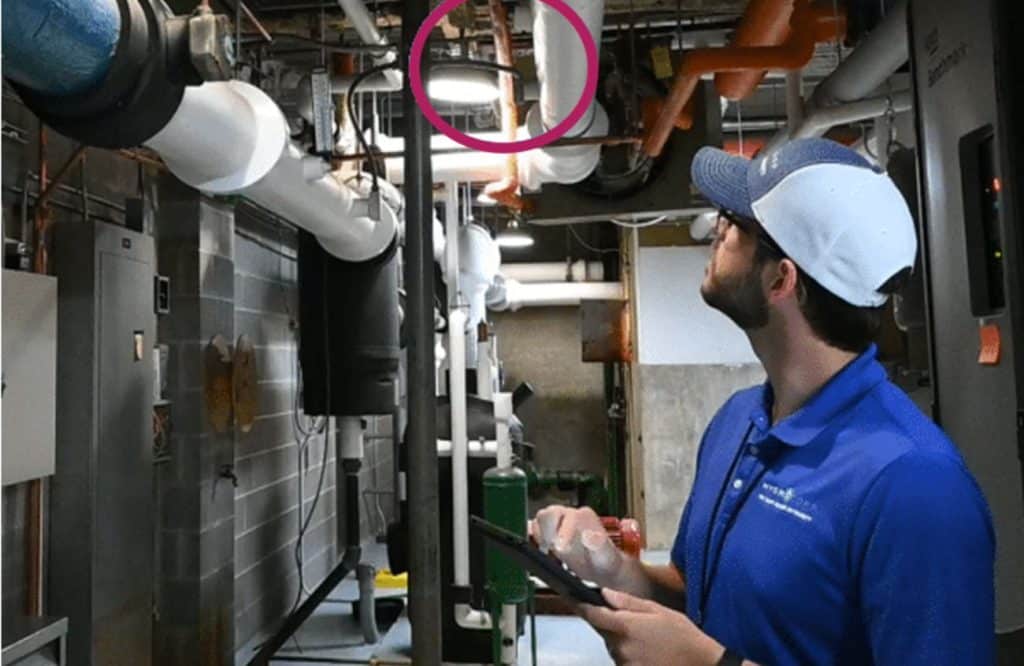Introduction:
The Cross-Connection Control Equation is a critical one to get correct, here’s why. Backflow is an inherent hydraulic problem that all public water systems can encounter. Contamination from unprotected cross-connections or backflow incidents pose a significant risk to public health and the integrity of water systems. Backflow Prevention plays a crucial role in mitigating this risk and ensuring the safety of our water supply. Many water systems implement a Cross-Connection Control Program to mitigate the risk posed by potential Backflow Contamination. In many states, it’s the law.

A key component in controlling hazardous Cross-Connections is the utilization of Backflow Prevention Devices, Testable Assemblies and Methods such as Air-Gaps. In many states, Public Water Systems focus primarily on monitoring the periodic testing of backflow preventer assemblies. To ensure that these Assemblies are properly functioning, they are required to be tested by certified testers to verify that the mechanisms inside the Assembly are continuing to work. Municipalities can track this information by keeping detailed records of Backflow Preventer Tests and following up on any failed tests to have the Assembly repaired or replaced.
There are many Backflow Preventer Test Tracking Software options that are commercially available to run the test tracking digitally. Backflow Preventer Test Tracking Software undoubtedly offers several advantages and can streamline the process of running a Cross-Connection Control Program, however, it is crucial to recognize that it is only a part of the overall solution to Cross-Connection Control.
Undetected connection hazards, non-compliant backflow preventer installations and unverified critical protections such as Air-Gaps and non-testable devices can be open channels to contamination of a facility or public water system.
Backflow Test Data usually captures a limited amount of information such as:
- Pass/Fail
- Make, Model, and Size of Assembly
- Date Tested and approximate Location
- Certified Backflow Preventer Tester Information
Aside from these data points, limited on-site condition information is tracked with software options. Field work, which involves physically examining points of water usage and addressing potential Backflow Hazards, is an indispensable part of the solution that cannot be replaced by software alone. In this blog post, we will explore the complementary relationship between Backflow Preventer Test Tracking Software and the essential boots-on-the-ground field work necessary to achieve comprehensive Cross-Connection Control.

What Backflow Test Tracking Software Does:
Backflow Preventer Test Tracking Software offers numerous benefits that contribute to efficient management and compliance of water systems. Let’s explore some key strengths of such software:
Data Management: Backflow Preventer Test Tracking Software excels in organizing and centralizing critical information related to Backflow Prevention devices, inspections, test results, and compliance records. This digital approach allows for easy access to historical data, simplified record-keeping, and streamlined reporting and analysis. The software enables water system administrators to efficiently manage vast amounts of data associated with Backflow Prevention efforts.
Automation: One of the significant benefits of Backflow Preventer Test Tracking Software is its automation capabilities. It can streamline administrative tasks such as generating automated reminders for inspections and tests, scheduling appointments, and sending notifications. These automations enhance efficiency, reduce the risk of oversight or missed deadlines, and help ensure compliance with regulatory requirements. The software’s automation features free up valuable time for water system professionals to focus on other crucial aspects of their work.
Efficiency: Backflow Preventer Test Tracking Software significantly improves efficiency in managing Backflow Prevention efforts. It eliminates the need for manual paperwork, reduces time-consuming data entry, and facilitates effective communication between stakeholders, such as water suppliers, technicians, and property owners. The software’s efficiency leads to faster response times, streamlined workflows, and enhanced overall management of Backflow Prevention activities.
Sustainability: One of the significant benefits of using Backflow Preventer Test Tracking Software is the reduction in paper waste. By digitizing processes and eliminating the need for physical paperwork, the software minimizes the consumption of paper resources. With Backflow Preventer Test Tracking Software, water system administrators can manage inspections, tests, and compliance records electronically, significantly reducing the reliance on printed documents. This eco-friendly approach not only contributes to environmental sustainability but also streamlines administrative tasks, enhances efficiency, and promotes a more sustainable and paperless work environment.

What Backflow Test Tracking Software Doesn’t Do
Physical Examination: Field work involves physically examining points of water usage to identify potential Cross-Connection Hazards and ensure that appropriate Backflow Prevention measures are in place. It allows professionals to inspect plumbing systems, identify faulty devices, and assess potential risks that may not be captured through data management alone.
Hazard Detection: Undetected Backflow Hazards pose significant risks to public health and water system integrity. Fieldwork provides an opportunity to proactively locate and eliminate these hazards. By conducting site visits and assessments, experts can identify potential sources of contamination, such as unprotected irrigation systems, chemical storage areas, or industrial processes, and implement appropriate preventive measures.
Code Compliance: Field work is instrumental in verifying the proper installation of Backflow Preventers and ensuring compliance with regulations and standards. It allows technicians identify any necessary repairs or replacements. Field inspections also provide an opportunity to educate property owners and occupants on best practices for Cross-Connection Control.

Elimination of Hazards: Every water system is unique, and effective Cross-Connection Control requires customized approaches. Field work allows professionals to adapt their strategies to the specific needs and complexities of each site. It enables them to make informed decisions about corrective instructions, installation, and compliance based on their on-site observations and expertise.
Non-Testable BFP Devices/Methods: Field work is essential to identify any non-testable Backflow Preventers that cannot be adequately assessed through software solutions alone as there will never be any test data for these devices. Some backflow preventers, such as air gaps or hose bibb vacuum breakers, cannot be tested using pressure differential gauges. In these cases, field professionals should physically examine connection that should be isolated according to codes and regulations. This hands-on approach is crucial for identifying any potential issues or deficiencies that may not be apparent through data analysis, ensuring that non-testable Backflow Devices are correctly installed and providing an extra layer of protection against Cross-Connection Hazards.

Recommended Actions
Ultimately, the implementation of field work into a municipal cross-connection control program requires a tailored approach that aligns with the Public Supply System’s resources, objectives, and regulatory requirements. Whether through in-house training, external inspectors, or contractor engagement, the goal is to ensure that the field work component is integrated seamlessly, leading to effective inspections, hazard identification, and the implementation of appropriate preventive measures to protect public health and maintain the integrity of the water supply.
Next steps to implement a field work portion of a Cross-Connection Control Program:
- Decide on who will perform the onsite survey work to identify unprotected hazards.
- Ensure the Cross-Connection Control Program Plan allows for compliance enforcement.
- Organize survey activities so that higher hazard facilities are top priority.
- Inform water customers of their responsibility when access or corrective action is required.
Conclusion
While Backflow Preventer Test Tracking Software plays a crucial role in data management, automations, and efficiency, it is not a comprehensive solution for identifying and controlling Cross-Connections in a public water system.
The boots-on-the-ground component is indispensable for:
• Detecting unprotected Backflow Hazards/Cross-Connections.
• Ensuring the proper installation of Backflow Preventers.
• Documenting corrective action requirements.
The combination of software and field work creates a robust program that protects public health, ensures compliance, and maintains the integrity of our water supply. By recognizing the significance of both aspects, we can achieve comprehensive Cross-Connection Control and mitigate potential risks effectively.
The Complete Equation:


